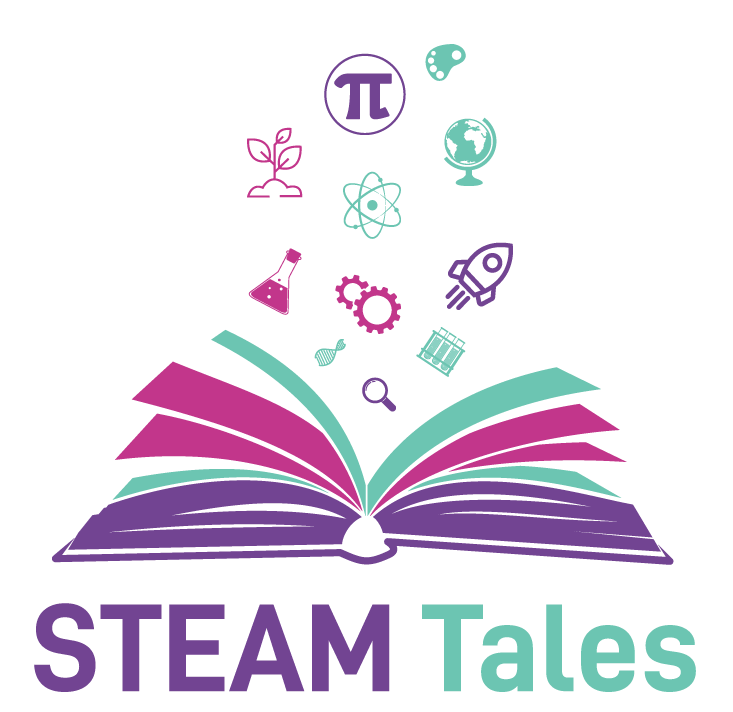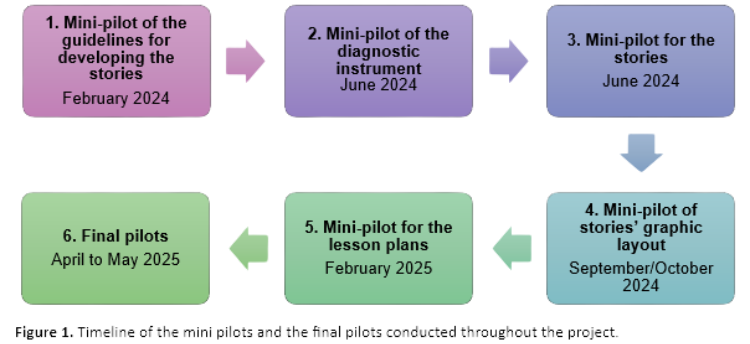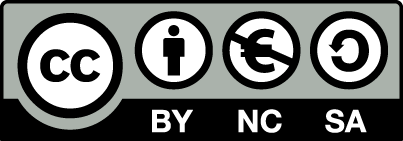Piloting the implementation of STEAM Tales resources
- An e-book with 12 inspirational stories about female role models in STEAM fields, complemented by colourful illustrations, written using Joseph Campbell’s Hero's Journey Model to present the role models as heroines overcoming obstacles and demonstrating courage and determination to achieve their dreams (Campbell, 2008).
- A set of 12 booklets with 2 lesson plans each, containing hands-on activities inspired by the work of the role models presented in the stories.
- An Assessment Protocol for teachers, designed to guide the selection and application of stories and lesson plans that are more suitable for their classroom. It includes a questionnaire to assess children's perceptions of gender in STEAM and their interest in STEM fields, as well as a table with an overview of the 12 stories and their corresponding lesson plans, including the role-model’s field, the STEAM domains covered and each activity title, to help teachers choose the lesson plan that best fits their needs and curriculum objectives.
The mini-pilots were conducted in primary schools in North of Portugal, identifying the resources’ strengths and areas for improvement, and ensuring that the resources were suitable and useful for the target group. The final materials were then piloted in the respective countries of all the institutions involved in STEAM Tales: Belgium, Germany, Italy, Portugal and Slovenia. These final pilots were designed to evaluate the materials' applicability and quality in different cultural, social and educational contexts. Below is a connection between the mini pilots and the final pilots conducted throughout the project.
- Mini-pilot of the guidelines for developing the stories: A story prototype was written with guidelines based on Joseph Campbell's Hero's Journey Model (Campbell, 2008), and a focus group was conducted with six children at a primary school (three girls and three boys aged 9 to 10) to study the emotions, feelings, and psychological processes the story evoked in them. The guidelines for developing the stories were then validated, with the Hero's Journey model being chosen as the project's storytelling model.
- Mini-pilot of the diagnostic instrument: Two focus groups were implemented – one consisting of children who had participated in the previous mini-pilot and one consisting of six new children. This enabled a brief exploratory comparison of the results between those who had and those who had not previously heard a story (with both groups being equally divided between girls and boys). Following the mini-pilot, the diagnostic instrument was adjusted according to the feedback, after which it was validated.
- Mini-pilot for the stories: With the storytelling guidelines and the diagnostic instrument validated, the stories were written and evaluated through a mini-pilot involving 87 children (49 girls and 38 boys). The children listened to a story and the diagnostic instrument was applied, before or after the story. After this, adjustments to the stories and to the instrument were made.
- Mini-pilot of stories’ graphic layout: A focus group involving six children (three boys and three girls) was conducted; the children were asked to evaluate illustrations created for a story with which they were not familiar, in order to ascertain whether they could identify aspects and events of the story based on the illustrations alone. In addition, five pre-service Physics and Chemistry teachers were interviewed to provide feedback on the stories and illustrations. After this, very small or minor adjustments to the stories’ graphic layout were made.
- Mini-pilot for the lesson plans: This was the final mini-pilot, in which stories were read, hands-on activities from the lesson plans were carried out, and the diagnostic instrument was applied - this was important to evaluate the intervention in schools with all the developed materials, update them according to the feedback of children and teachers and guide the implementation of the final pilots by all partners.
- Final pilots: This was ultimately conducted with all country partners to evaluate the project more widely, using a more diverse sample of participants, and to understand how these materials can be implemented and adapted to different contexts, as well as their potential for use in classroom environments across these contexts. In total, 345 children and 20 teachers across all five countries participated in the final pilots.
This multi-phased piloting process ensured that each component of the STEAM Tales resources was tested, adjusted, and validated through interaction with the target audience and educators. The implementation across five countries also allowed the project team to observe how the materials work in different cultural and educational contexts, with the aim of promoting gender balance and fostering interest in STEAM fields.
During the implementation of the mini-pilots, researchers detected gender stereotypes regarding STEM fields among the children. They tended to associate STEM more with the male gender. It was also noted that, although girls showed a greater interest in STEM subjects than boys, this was not reflected in their professional aspirations, with fewer of them expressing an interest in working in STEM fields in the future. This demonstrates the paradox of having an interest in these fields but not imagining oneself represented in them. Stereotypes, a lack of knowledge, and a lack of representation of female role models may contribute to this. This confirms the importance of the STEAM Tales Project's objectives. Teachers also praised the project for its commitment to promoting gender equity and provided positive feedback on the lesson plans, demonstrating a willingness to apply them in their classrooms.
For further details regarding the materials developed in the project, consult the Assessment Protocol for teachers. Information about the results of the final pilots will be available in the STEAM Tales Final Report.
References
Campbell, J. (2008). The Adventure of the Hero. In J. Campbell (Ed.), The Hero with a Thousand Faces (3rd ed., pp. 49-127). New World Library.
European Commission. (2023, May 5). Gender equality in research and innovation. Research and Innovation.
Singh, K. (2024, February 4). Preparing kids for the jobs of tomorrow: Investing in STEAM education. Forbes.
UNESCO. (2023, October 19). Girls’ and women’s education in science, technology, engineering and mathematics (STEM).
https://www.unesco.org/en/gender-equality/education/stem
UNICEF. (2020). Towards an equal future: Reimagining girls’ education through STEM (ISBN 978-92-806-5178-2).
https://www.unicef.org/media/84046/file/Reimagining-girls-education-through-stem-2020.pdf









